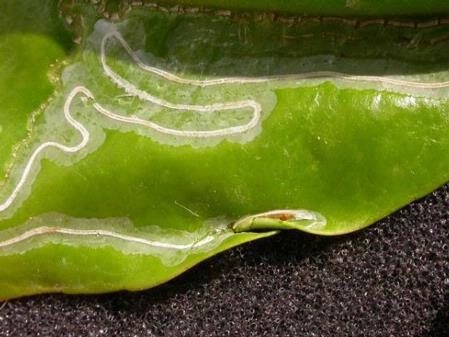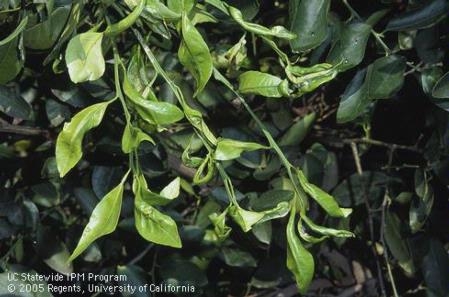The citrus leafminer is an interesting insect.
They develop best when relative humidity is greater than 60%, and temperatures are between 70 and 85° F. Their entire life cycle takes about two to seven weeks to complete, depending on climatic conditions.
The larval stage is when the majority of the damage to citrus trees, and closely related species, occurs. Eggs, which have been laid on the underside of the leaves, hatch and immediately begin feeding. They feed by creating shallow tunnels (mines) in young leaves of citrus. As it feeds and develops, the larva leaves visible trails in the leaves. As the insect begins to pupate it exits the leaf, rolls the edge around itself, and continues its development to the adult moth stage.
Mature citrus trees can generally tolerate citrus leafminer infestations with no harm to growth or yield. Young trees are more susceptible to damage and growth retardation, but rarely die from citrus leafminer.
UC ANR has many resources available to help identify this pest, estimate potential damage, and provide management guidelines to citrus growers large and small.
- Home gardeners and landscape professionals can find help from UC IPM pest notes by clicking here.
- Commercial growers and production nursery personnel can view pest management guidelines here.
- Additional information and fabulous photos can be found here.


